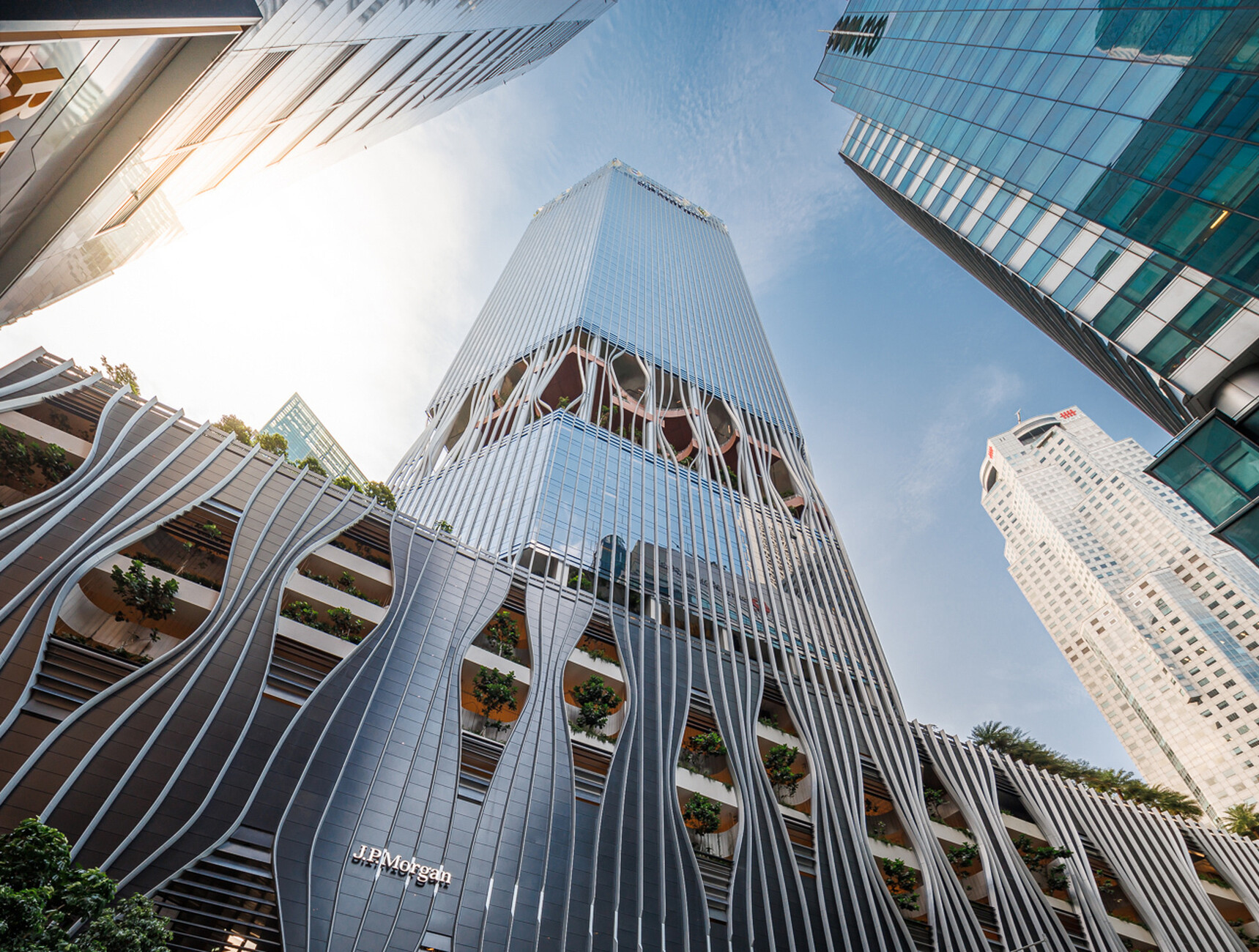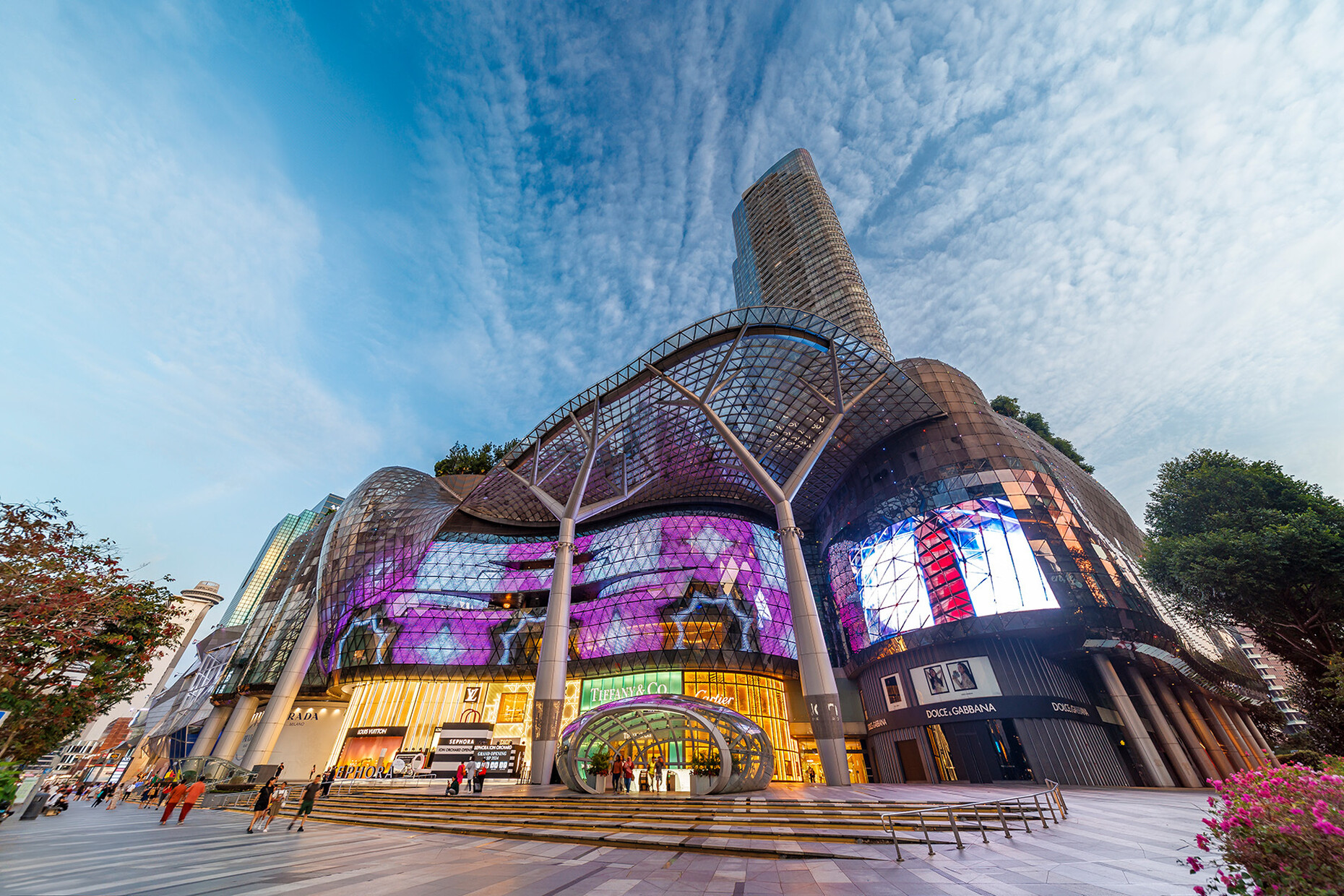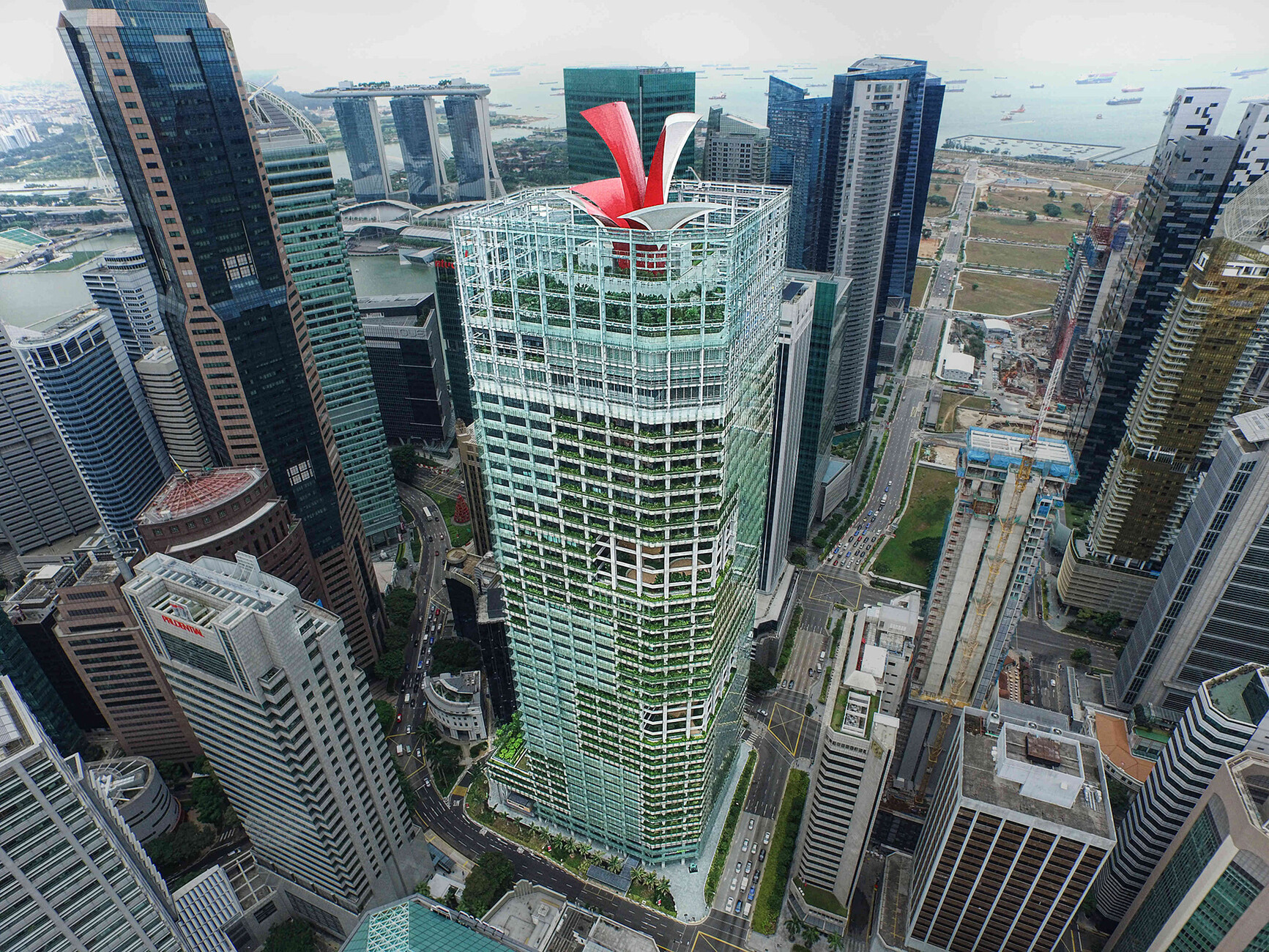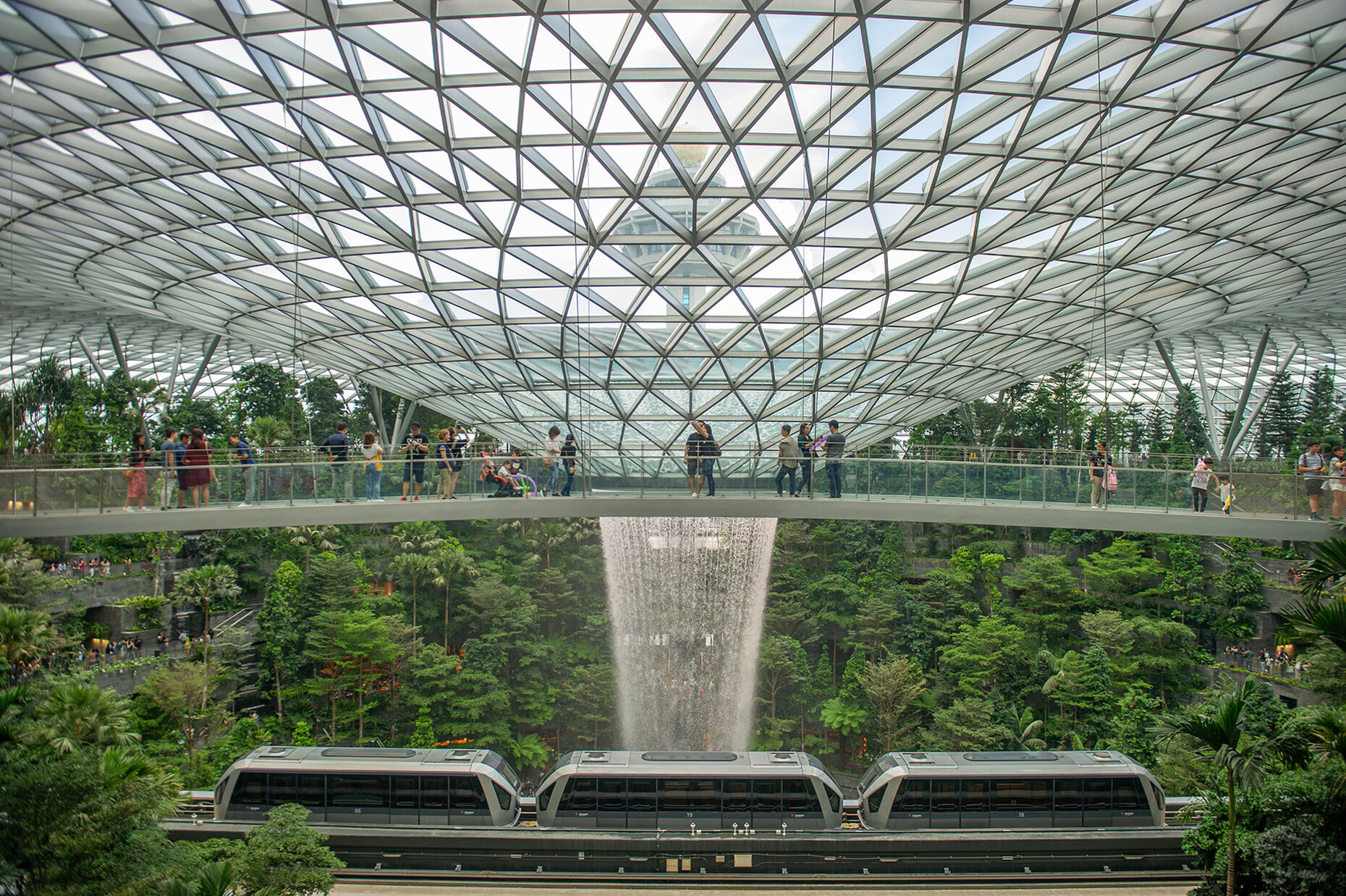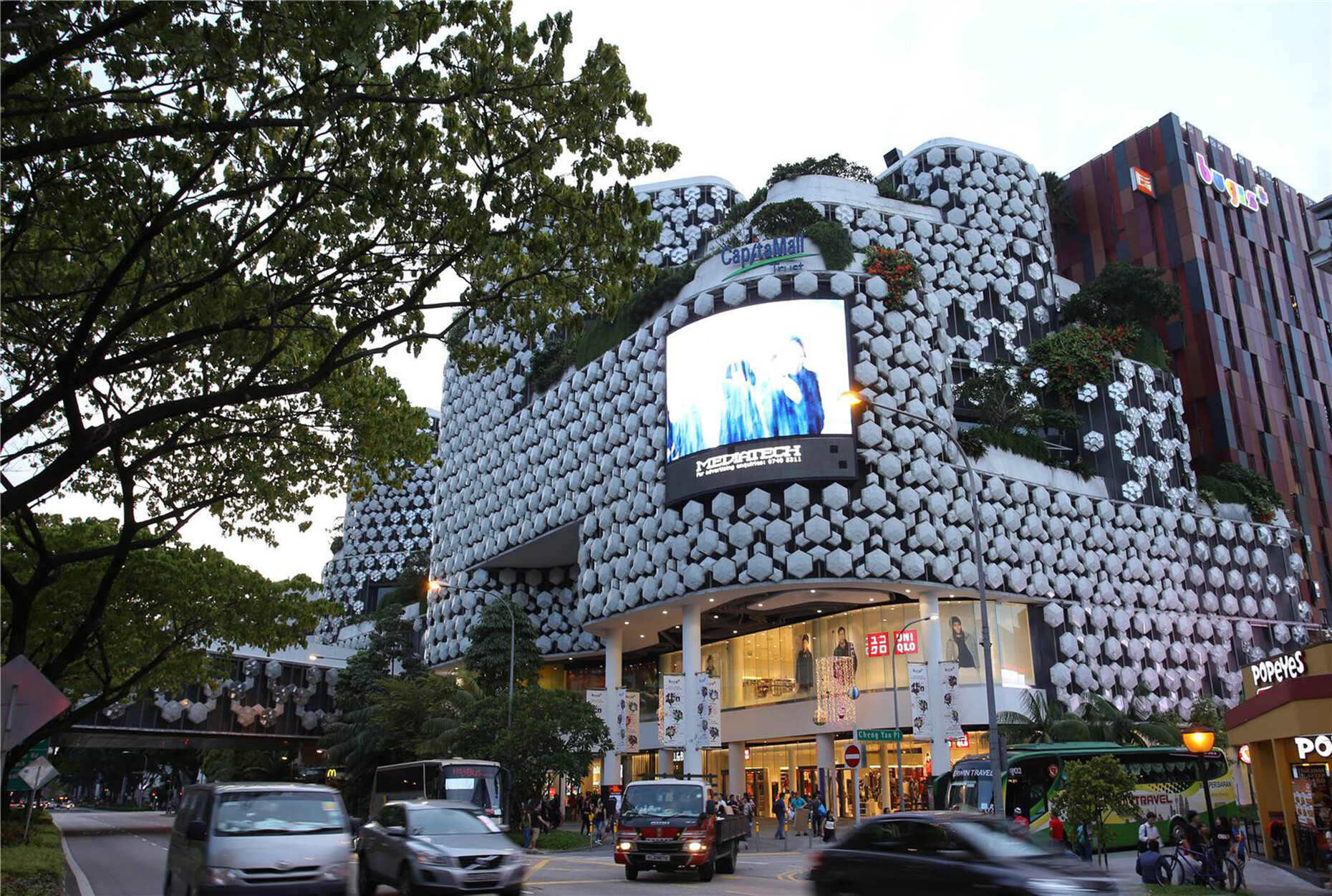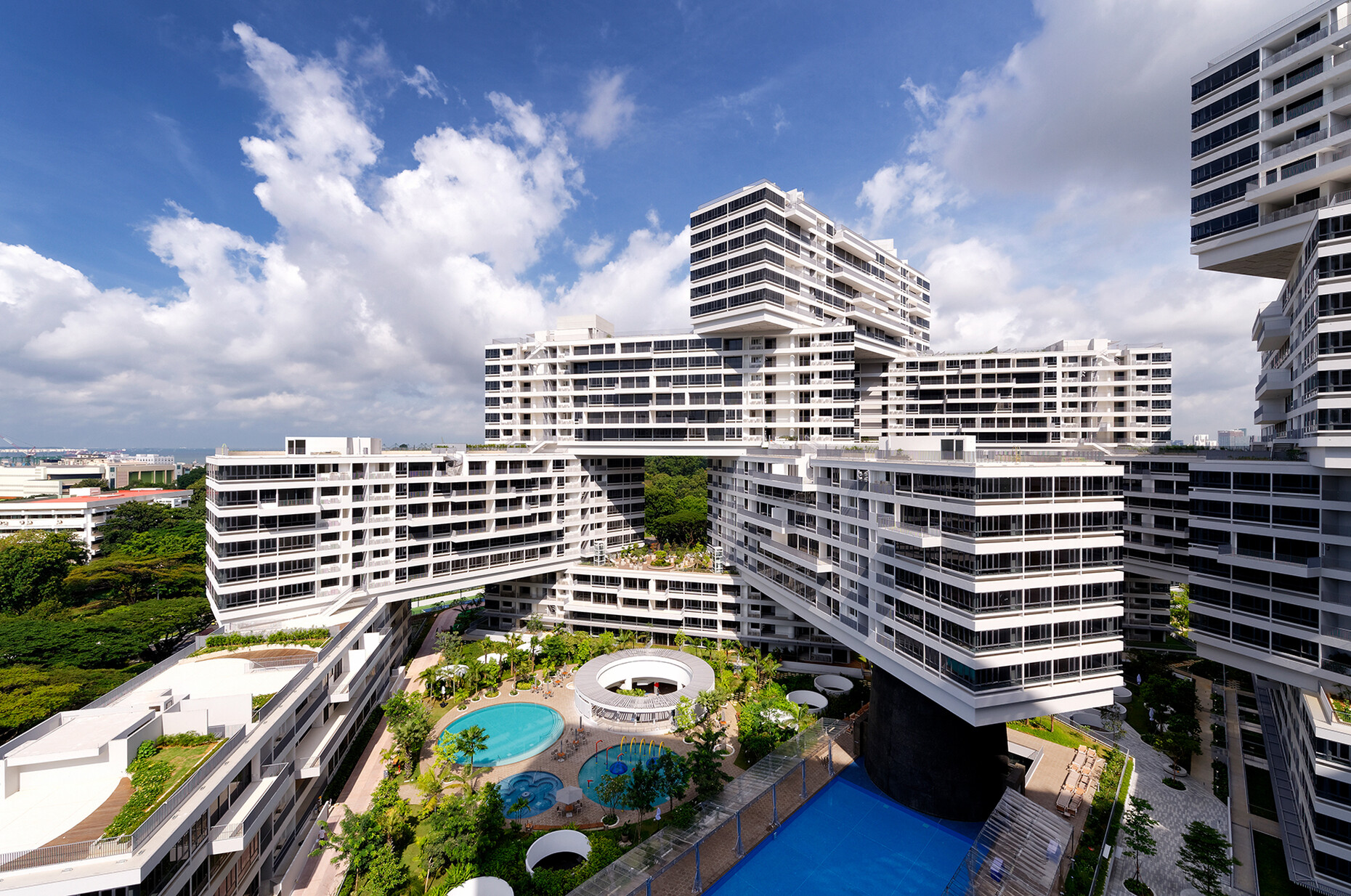Friendly kraken
The customer is always right – this also applies to architecture. Without a good client, a successful project cannot be realized. CapitaLand is the client behind the CapitaSpring project, which has just been awarded this year's International Highrise Award. CapitaLand is currently one of the largest real estate and project development companies in Asia. It was formed in 2000 from a merger between the real estate division of the Singaporean state bank DBS and the real estate company Pidemco. Although Singapore is the home of CapitaLand and is the focus of its projects, its activities have been internationally oriented from the outset and were systematically expanded in the 2000s through Malaysia, India, Vietnam, Australia, Japan, China and finally to almost the entire Asian continent. CapitaLand has always developed real estate that was then sold at a profit, as well as keeping and operating buildings in its own portfolio on a long-term basis.
Southeast Asia, China and India are still considered to be CapitaLand's core markets, but the company is active in more than 260 cities in over 40 countries around the world, with a number of branches and real estate trusts. Its portfolio includes office and residential high-rises, large shopping malls, server and data centers, self-storage facilities and business and industrial parks. The Ascott Limited, the company division responsible for lodging real estate, which has been part of CapitaLand since 2008, currently operates more than 960 properties in about 230 cities around the world, including serviced apartments, hotels, coliving and student accommodation properties. CapitaLand can probably be imagined as a real estate kraken with at least eight arms, but this is a friendly one.
From an early stage, CapitaLand has been committed to great care in its real estate projects. “With our growing global presence, we believe that we also have a greater responsibility to the communities in which we operate,” the company writes. This includes both environmental sustainability and social responsibility, which the company aims to fulfill through long-term commitment to most projects. To this end, CapitaLand has long followed a self-developed “2030 Sustainability Master Plan,” which, from financial transparency to energy efficiency, water management, recycling and social impacts, comprehensively maps out everything that the international community has been promising to solve for years at its climate conferences without success. CapitaLand is having the implementation of this master plan evaluated by the independent Science Based Targets Initiative. In 2022, the initiative confirmed that CapitaLand's master plan can keep global warming below two degrees.
But the demands also include architectural and design aspects. These are followed with great consistency by the company, which repeatedly works with renowned architectural firms or organizes invited competitions. Under CapitaLand's ownership, dozens of outstandingly designed shopping malls and high-rise buildings have been created. Examples include the ION Orchard shopping arcade in Singapore, completed in 2010, with a connected 218-meter-high residential tower, The Orchard Residences. The designs come from the local architecture firm RSP. Or the massive high-rise ensemble called “Raffles City Chongqing” in China, from 2019. It consists of eight high-rise buildings, four of which, at a height of 250 meters, support a round tube called “The Crystal”, which is considered the second highest skybridge in the world. It was designed by Israeli-Canadian architect Moshe Safdie, who is world-famous for his radical projects such as Habitat 67 in Montreal and the Marina Bay Sands in Singapore. Raffles City Chongqing is considered one of the most expensive projects ever built in China – which really means something in China.
The Jewel shopping mall at Singapore's Changi Airport, which was also designed by Safdie, offers another superlative. At its center, the architecture forms lush green terraces like an indoor jungle under a glass roof that opens downwards in the middle to form the largest indoor waterfall in the world. And when we look at CapitaLand's residential projects, we see mega-projects such as “The Interlace” in Singapore from 2013, a design by Ole Scheeren and RSP, which stacks six-storey residential blocks on top of each other like a huge pile, as if they were building blocks of a particularly creative child. Large spaces remain free between the blocks, guaranteeing the apartments plenty of light and air and relatively expansive views.
CapitaLand states that the goal of these projects is not only to beautify Singapore's skyline, but that each of the examples has also been developed in a sustainable, innovative and community-oriented way. However, many of CapitaLand's projects are not aimed at such records. The norm tends to be quieter projects such as Raffles City in Singapore. This is also an enormous complex of several office and hotel towers – including the circular Stamford Hotel, designed by I.M. Pei – a shopping mall and a conference center. The complex was built in 1986, as evidenced by its shiny silver aluminum facade. CapitaLand took it over in 2006 and began a careful renovation and expansion so that the facilities would once again meet current standards. This is a more sustainable approach to existing buildings than the widespread practice of demolition and new construction.
Likewise, the Bugis+ shopping center in Singapore was preserved after CapitaLand took it over in 2011. The design of the multi-faceted structure was created by WOHA Architects, while the wonderfully abstract media façade made of glowing snow crystals was designed by the Berlin firm realities:united. Under the old investor, the mall was not doing particularly well. CapitaLand mainly changed the visitor flow and accessibility, and since then business has been better and the façade is still a particularly playful piece of architecture. With this project, CapitaLand was able to prove that it has a heart for ambitious and thoroughly playful experimental architecture – and also knows how to operate it professionally and sustainably.
With such ambitions, it is hardly surprising that CapitaLand projects have already been nominated several times for the International Highrise Award, which has been presented by the German Architecture Museum and the City of Frankfurt am Main since 2004. The first nomination in 2014 was for the Raffles City project in Chengdu, China. Designed by American architect Steven Holl, it is, like the other “Raffles City”, a conglomerate of several high-rise buildings connected by an expressive design and several skybridges. In 2016, “CapitaGreen”, designed by Toyo Ito, a 245-meter-high tower, was nominated, which can be considered a forerunner to the now award-winning CapitaSpring. The entire structure of the “CapitaGreen” is meant to resemble a growing plant. The tower culminates at its top in a multi-storey greenhouse in which 40 different plant varieties flourish; above that, two stalks stretch up like leaves. They collect the wind and help to supply the offices with fresh air and improve the building's energy balance.
In 2018, a Raffles City project was nominated again, this time in Hangzhou, China, designed by the Dutch firm UN Studio, led by Caroline Bos and Ben van Berkel, who have developed a recognizable signature with their computer-aided, soft designs. And in 2002, the third Raffles City was also nominated with the work by Moshe Safdie mentioned above. It is therefore no coincidence that the International Highrise Award is being given to a CapitaLand project this year, but rather the result of the continuous implementation of the company's goals on a creative and ecological level. The company itself sees “CapitaSpring” as a symbol of its own aspirations: “CapitaSpring not only sets new standards for the offices of the future, but also embodies our commitment to a greener and more sustainable future.”
